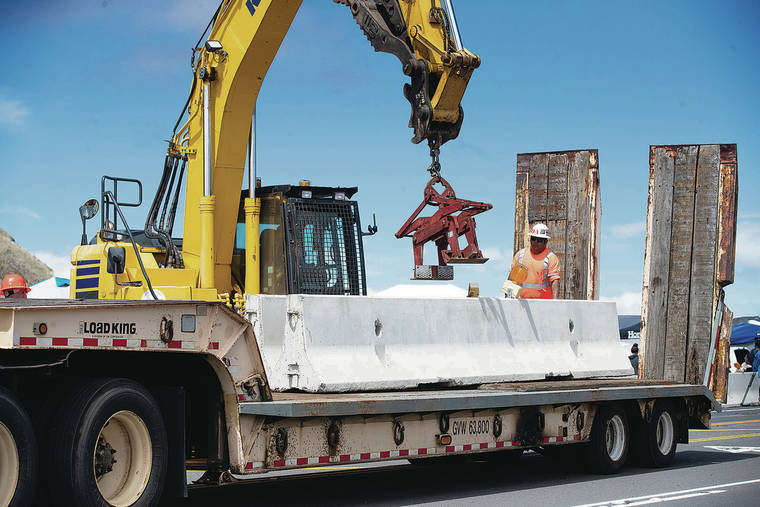A hearing has been scheduled before the state Land Use Commission later this month to consider a petition that challenges the legality of “the industrial uses” atop Mauna Kea, including the controversial Thirty Meter Telescope.
Hawaiian cultural practitioners Ku‘ulei Higashi Kanahele and Ahiena Kanahele of Hilo filed the petition, which argues that the growing number of observatories has transformed the conservation district at the summit into a de facto urban district requiring a land use district boundary amendment.
Because obtaining a district boundary amendment from the Land Use Commission is a lengthy process and could take years, the request can be seen as the latest attempt to further delay construction of the $1.4 billion telescope.
For months the TMT project has been on hold as protesters block access to Mauna Kea. The protest has grown in size and support, especially among Native Hawaiians who see the TMT as a symbol of stolen lands and a violation of indigenous rights.
Ku‘ulei Kanahele is an earth science researcher with the Edith Kanaka‘ole Foundation and daughter-in-law of kumu hula Pualani Kanaka‘ole Kanahele, who was arrested in July, along with other kupuna, or elders, for blocking Mauna Kea Access Road.
The Land Use Commission is responsible for classifying state lands into four districts: conservation, agricultural, rural and urban areas. Petitions for land use district boundary amendments seek a change from an existing designation to a new one.
The Kanahele petition says the research facilities and associated offices, parking lots and utilities atop Mauna Kea are inconsistent with the conservation district. The facilities at the summit have displaced habitat for the rare wekiu bug, generate noise and obstruct scenic areas and open space.
The Kanaheles consider the area a wao akua (realm of the gods), an area that should be free from excessive human activity and development.
“Industrial development at the summit of Mauna Kea desecrates the very nature/essence of my akua, by destroying the open, unobstructed space that is characteristic of conservation districts,” Ku‘ulei Kanahele wrote in a declaration.
Research facilities are generally considered industrial uses under county zoning laws in Hawaii, according to the petition.
The TMT received its conservation district use permit allowing construction through the state Board of Land and Natural Resources, which regulates land uses in the conservation district.
But the BLNR lacks the commission’s authority to reclassify lands from one district to another or to amend district boundaries, the petition notes.
“BLNR’s power to identify and appropriately zone those lands does not extend to permitting non-conservation uses within conservation district and it is this commission’s authority to declare what uses are appropriate in which districts,” the document says.
At the same time, the couple would strongly oppose any boundary amendment to change the summit to an urban district, it says.
The Kanaheles’ attorney, Bianca Isaki, said she is encouraged by the scheduling of the hearing, and it might signal the commission is ready to fully engage on the topic.
“In my experience (the Land Use Commission) takes its duties very seriously, so I think they will pay attention,” said Robert Thomas, a veteran Honolulu land use attorney.
But Thomas said it’s probably the kind of high-profile issue that will end up in the courts and eventually land before the state Supreme Court.
The Land Use Commission hearing will be Oct. 24-25 at the Grand Naniloa Hotel Hilo.

